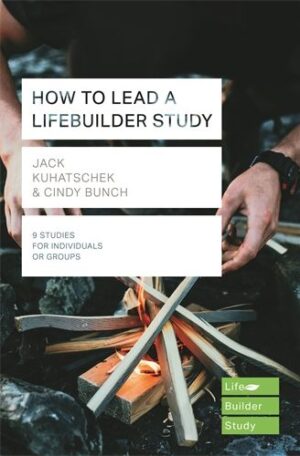



My first experience of Christians praying out loud together in an informal way (rather than formal church prayers given from a podium) was in my first small group. At first I found it intimidating and awkward, but gradually I became more comfortable. Over time I found that my own prayer life and vocabulary were growing as I learned how to pray by listening to others pray. I learned that God understands ordinary language. And I found that verbalizing my own prayers helped me to be aware of how I was praying and what I was asking for! So I strongly encourage you to take time to pray with your group—whether it’s five minutes or fifteen minutes.
Prayer suggestions are found in italics at the end of each study. They are intentionally simple and open-ended to provide a theme or direction for prayer that will tie into the study and to remind you to pray. You should pray as you feel led according to what has taken place in your study. In this case the guide says:
Ask God to be with you as you continue to study his Word and to impress his truth on your heart.
If most or all of your group members are Christians and you’ve been together for a few weeks, then you may want to try praying aloud together, using “conversational prayer.” Conversational prayer includes the following components:
To ease the group into praying aloud together, you might try offering prayers that people can chime in and complete, like “We thank you for . . . ” or “We pray for our family and friends . . . ” and so on. Or you can ask for prayer requests and ask each person to pray for the request made by the person to their right. It is a powerful experience to hear someone pray for our needs. Doing this will knit your group together and grow the members spiritually.
At the end of each study you will find a section called “Now or Later.” This section expands on the themes of the study through further Scripture reading, discussion, meditation, journaling or taking action to apply the passage. Many of the ideas are most effective when individuals or prayer partners carry them out between sessions. However, you can work on them in group meetings as well, if time allows. Here’s the “Now or Later” idea from the God’s Word sample study.
To help people apply what they are learning, you may want to encourage group members to work on these ideas between studies, then ask at the beginning or end of the next study what they are learning. Even if you don’t use the “Now or Later” section, you may want to ask follow-up questions about key points of application from the previous studies. You won’t need to do this every week, but you may sense key points in group life where people are experiencing spiritual transformation and making potentially life-changing decisions. Simply moving on to the next topic without any follow-up would be neglecting what is happening spiritually at those points.
NOW OR LATER Read these verses in a couple different Bible versions, especially a paraphrase like The Message or the New Living Translation. Note the words or images that stand out. How is your understanding of this passage deepened or expanded?